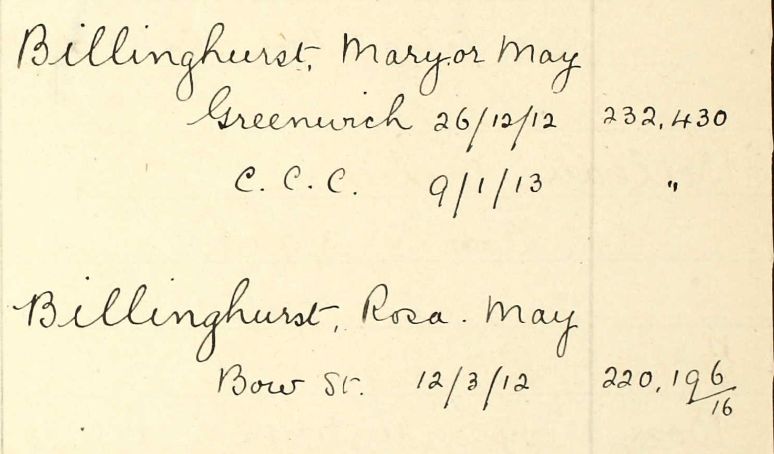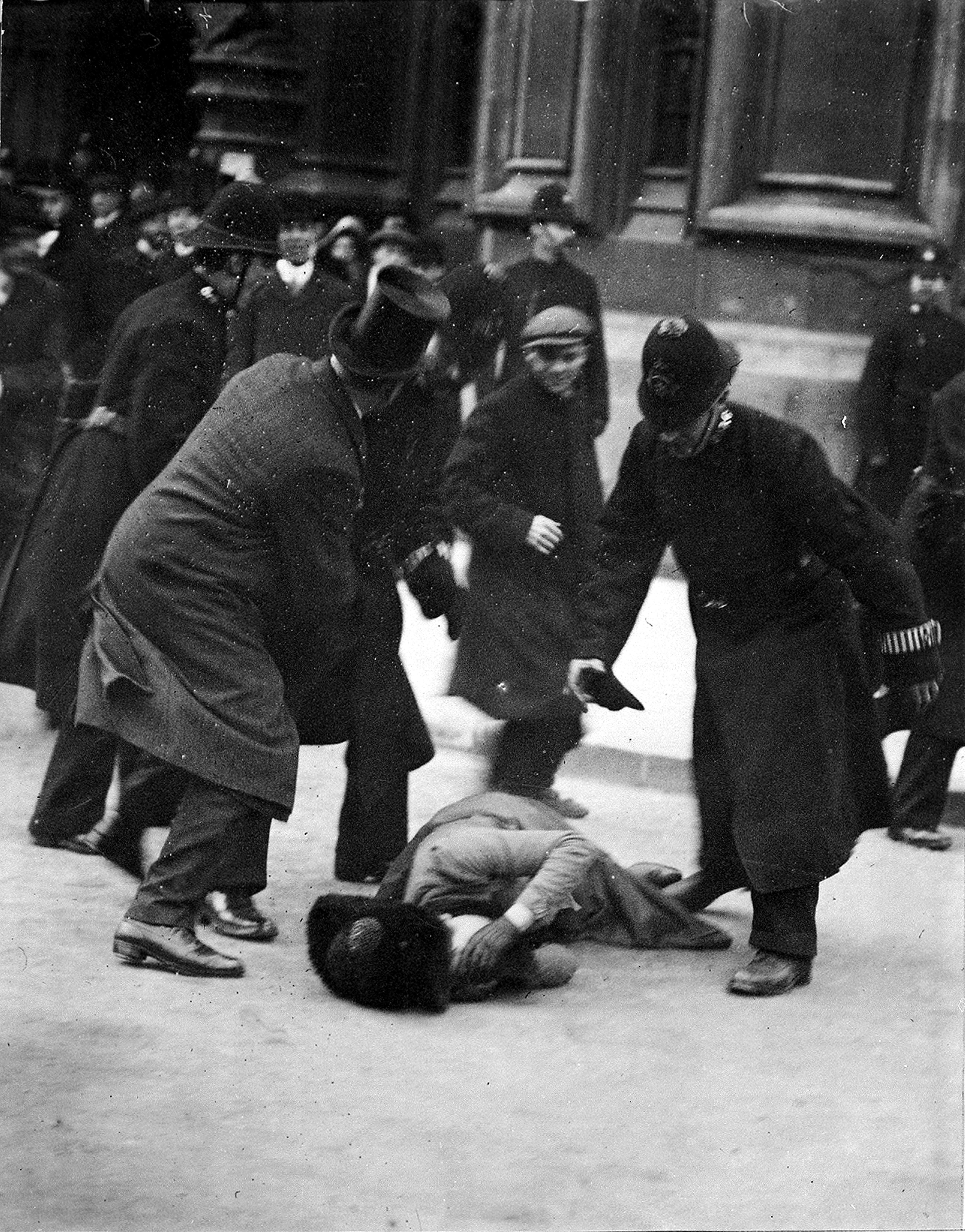To mark Disability History Month I have chosen to write about Rosa May Billinghurst, an active member and organiser of the militant campaigning association fighting to win votes for women, the Women’s Social and Political Union (WSPU). With the upcoming centenary this February of some British women being given the right to vote for the first time, remembering the fight for suffrage through the inspiring stories of suffragettes like Billinghurst is especially significant.
Born in 1875, May [Rosa May] Billinghurst was commonly called the “cripple suffragette” because as a child she became paralysed due to polio. As a result, she was left unable to walk. Despite her disability, she became a regular at suffrage demonstrations in her adapted hand-tricycle, which she used to propel herself. Her appearance at these suffrage events attracted much attention to the movement.[1]
The Window Smashing Campaign
Billinghurst was first arrested for her militant campaigning in 1911 for obstructing police at a demonstration in Parliament Square. Interestingly, this arrest has not made it into the Home Office’s index of suffragettes arrested. The first mention we find of her in records held at The National Archives is from March 1912 in relation to the WSPU’s window smashing campaign. Between 1910 and 1912 Parliament considered various bills to give some women the vote, but ultimately none of them passed. In response, the WSPU organised a window smashing campaign in March 1912 which led to 220 arrests. The campaign was focused upon the West End of London and “on 1 March, 150 women were given hammers, told exactly when to strike and how to avoid falling glass”.[2]

As part of the campaign, Billinghurst smashed a window on Henrietta Street. Records show that she was sentenced on the 12th of March to one month’s imprisonment. The window smashing campaign and subsequent arrests were reported widely in the press. Whilst many, but not all, of the women involved are mentioned by name within the newspaper cuttings kept by the Home Office, May is not. Her disability, however, is noted. Here we see her being referred to as a cripple by not only her peers but also the press: “A cripple who had broken a window in Henrietta-street refused to enter into recognizances and was sentenced to one month’s imprisonment”.


Campaigning Despite her Disability
Whilst it was seemingly a defining characteristic for journalists, Billinghurst’s disability did not seem to hold her back in taking part in militant activities. Neither, it seems, did the treatment she received at the hands of the police. In evidence collected by WSPU members and passed to the Parliamentary Conciliation Committee for Women’s Suffrage, May recalls the treatment she received on Black Friday in 1910. In her testimony, Billinghurst describes how she was thrown out of her tricycle “in a very brutal manner” by the police, then had her arms forced painfully behind her back, with one of her fingers bent right back, which caused her “great agony”. She was left “in the middle of a hooligan crowd” unable to move as the wheels on her hand-tricycle had been tampered with. Whilst there were reports of police violence from other suffrage supporters, May’s testimony is striking. Another time, the police, “in addition to personal violence, finding that they could not remove the new valves, twisted my wheel so that it was again impossible to move the machine”. The fact that Billinghurst continued to campaign after these incidents shows her unwavering commitment to the cause despite the police exploiting her physical disability.

After the violent encounters on Black Friday, and her involvement in the window smashing campaign in 1912, Billinghurst still continued her fight for women to get the vote. In December 1912, she was charged with damaging letter boxes in Deptford and was sentenced to 8 months in prison. She was subsequently forcibly fed in prison, becoming so ill that she was released after two weeks. After this spell in prison, she continued to support the WSPU’s leadership and carried on campaigning by chaining herself to the railings of Buckingham Palace.[3]
Despite reportedly causing a stir at demonstrations, Billinghurst was not the only disabled woman to become a suffragette. Adelaide Knight was another activist with mobility issues who campaigned whilst using crutches and a stick. Knight was a key figure in the East End women’s movement and also chained herself to the railings outside Buckingham Palace. She was similarly arrested and served a prison sentence. Billinghurst and Knight would have had differing experiences of the suffrage campaign to those demanding the vote alongside them; however this did not seem to deter them. Both are inspiring examples of women who did not let their disabilities get in their way of campaigning for the right to vote in Parliamentary elections.
If you are interested in women’s suffrage more broadly I would recommend having a look at The National Archives’ upcoming events – we have plenty to mark the centenary of some women getting Parliamentary franchise next year.
For guidance on researching the topics covered in this blog I would recommend our research guides on disability history and women’s suffrage.
[1] Elizabeth Crawford, The Women’s Suffrage Movement, A Reference Guide 1866-1928, (1999), UCL Press, pp. 53-4
[2] Jane Chapman, ‘The Argument of the Broken Pane’, Media History, 21:3, (2015) p. 244.
[3] Crawford, The Women’s Suffrage Movement, pp. 53-4.